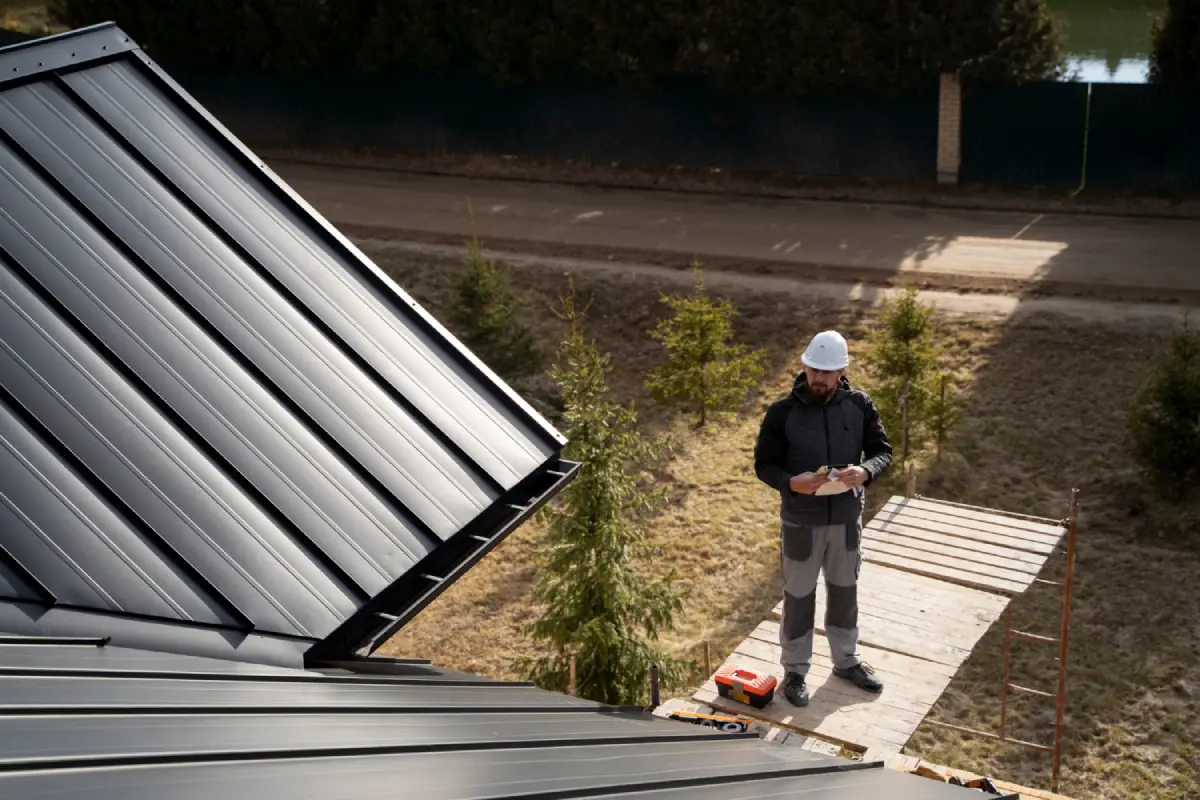The Role of Gutters in Protecting Your Home: Smart Maintenance Tips and Common Mistakes
Gutters may not be the flashiest feature of a house, but their role in protecting your home’s value and structural integrity is undeniable. Without gutters, rainwater pours directly off the roof, flooding landscaping, seeping into basements, and eroding soil around the foundation. Over time, this water can cause cracks in foundations, damage siding, and cause unsightly stains on exterior walls.
Proactive homeowners searching for gutter installation companies Hillsboro or reliable gutter information often discover that a well-designed and maintained gutter system dramatically reduces the risk of these headaches.
Research from the Environmental Protection Agency further validates the critical importance of gutters, showing how thoughtful rainwater management protects homes and communities. Gutters aren’t just about directing rain away from individual properties—they also play a crucial part in reducing stormwater runoff, preventing soil erosion in neighborhoods, and keeping local waterways cleaner. Homes with functioning gutters experience less mold, fewer leaks, and greater indoor air quality over the long term.
Common Gutter Problems Homeowners Face
Even though gutters are designed as simple water management tools, they are susceptible to a host of predictable problems that can snowball quickly. Among the most common issues is clogging. Leaves, twigs, granules from asphalt shingles, and even animal nests easily fill up open gutters, blocking the pathway for water.
This often leads to overflows during heavy rain, and the telltale signs include water pouring over the edges, stained siding, and puddles around the house’s base. In extreme cases, overflowing water can seep into basements or crawl spaces, causing potentially costly structural concerns.
Sagging gutters are another routine trouble spot. When gutters are weighed down by debris or standing water, the brackets holding them to the fascia can work loose, and the whole system may droop—or even detach from the house altogether.
Leaks due to cracks, holes, or failed seals are also problematic. These can occur after years of temperature fluctuations or after a single damaging storm. Attending to these troubles early is key: unchecked, a minor gutter issue can quickly escalate, threatening your home’s appearance and durability.
Maintenance Mistakes to Avoid
Many homeowners don’t realize how crucial regular maintenance is for gutters’ performance until they face expensive repairs. The biggest blunder? Neglecting to clean and check the gutters at least twice a year. Even if your property isn’t surrounded by trees, artificial debris and granules from roof shingles accumulate surprisingly. Allowing leaves and debris to sit creates dams that block water flow, often leading to rust and early gutter breakdowns.
- Delaying seasonal cleaning, which lets organic matter accumulate and block water flow
- Installing or keeping gutters and downspouts that are too small to handle local rainfall volumes
- Not maintaining the necessary gutter slope for proper drainage leads to water pooling and rust.
- Ignoring small leaks or holes until they become major structural problems
- Forgetting to inspect gutters after storms, when weaknesses, loose fasteners, or cracks are most likely to appear
Regular, proactive attention is the best cure. Unlike many other household systems, gutters benefit from a “little and often” approach.
Smart Gutter Maintenance Tips
Caring for your gutters doesn’t have to be a dreaded chore. Scheduling cleanings ahead of spring and fall can prevent buildup and costly surprises. Monthly inspections during peak leaf drop can make a massive difference if mature trees shade your home. Work safely—always use a sturdy ladder, gloves, and a plastic scoop or gardener’s trowel to remove material.
After clearing out debris, run water from a garden hose through the system to flush tiny particles and check the downspouts for blockages. Check for clogs or improper gutter pitch, and if you spot water spilling over the sides or slow drainage, regularly tighten or replace gutter hangers and brackets to keep sagging at bay and extend system longevity.
Many homeowners add gutter guards, which come in different styles, to reduce cleaning time. While no guard offers a maintenance-free guarantee, they prevent most large debris from entering and allow rainwater to flow freely. Nonetheless, some fine material or seeds can gather on top and should still be swept away a few times yearly.
Seasonal Gutter Care: What to Know
Each season brings its unique gutter challenges. Falling leaves and pine needles can overwhelm even recently cleaned systems in autumn. If those leaves settle with rainwater, they turn into a soggy mat, which encourages moss, mold, or weed growth inside the gutter runs. As winter arrives, blocked drains or excessive buildup set the stage for dangerous ice dams—chunks of ice that can lift shingles, damage roofs, and add enough weight to tear gutters from the house.
According to home improvement experts, post-storm inspections are essential. High winds and driving rain can yank gutters out of alignment, dislodge downspouts, or introduce new clogs in hard-to-see places. Icicles and visible frost near gutters are signals that it’s time for urgent attention, as their presence indicates poor drainage or internal blockages. Spring maintenance ensures freshwater flows smoothly and prevents insects from settling as temperatures rise.
How to Detect Gutter Damage Early
Savvy homeowners develop a habit of checking gutters for subtle signs of trouble. Any peeling or bubbling paint below your gutter line is usually a telltale sign of overflowing water. Similarly, pools of water or streaks running down exterior walls point to leaks or acute clogs that need immediate attention.
- Peeling or bubbling paint beneath the gutter line
- Standing water or dampness near foundations after heavy rainfall
- Visible splits, cracks, rust spots, or openings at gutter seams
- Growth of weeds, plants, or moss inside gutters—evidence of prolonged standing water
A practical test is to flush the gutters with water and watch the flow. Any trickles emerging from seams or overflowing water at corners should be addressed right away. Early detection conserves your investment in your home by reducing the risk of foundational and structural problems later.
When to Repair Versus Replace Gutters
Deciding between repairs and replacement depends mainly on the extent and frequency of gutter issues. Isolated leaks, loose fasteners, and minor separations can usually be sealed, screwed back in place, or patched up with a basic repair kit. For these quick fixes, affordable products and short DIY guides can keep your system working for years.
However, if you’re seeing repeated leaks, gutters pulling away from the roofline, significant rust, or multiple sagging sections, it’s more innovative and cost-effective to consider new installation. The general advice is straightforward: if over 30% of your guttering is damaged, the returns of replacing the entire system—for performance, aesthetics, and reduced maintenance—almost always outweigh piecemeal repairs. New seamless gutters or advanced materials also enhance longevity and offer modern protection features for homes in every climate.







0